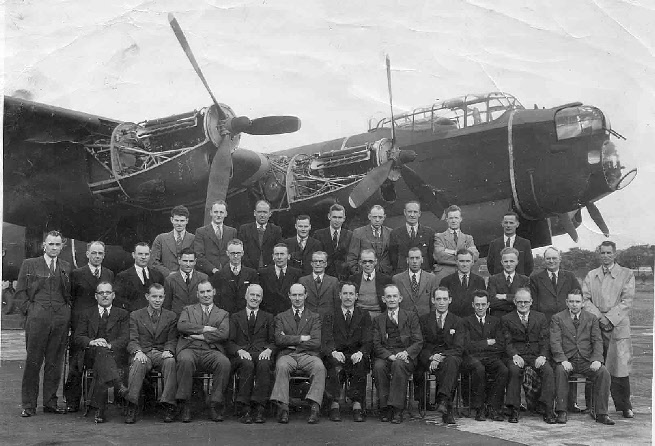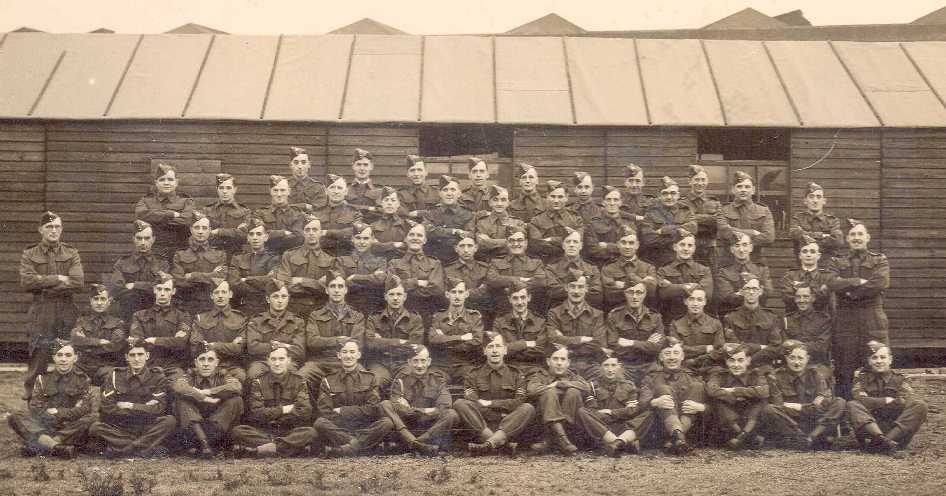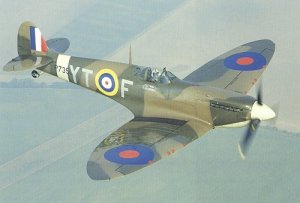MEMORIES
AND INFORMATION - WARWICKSHIRE, CASTLE BROMWICH
THE
SPITFIRE FACTORY
and
EDWARD JOHNSON
This
is a page within the STAFFORDSHIRE HOME GUARD website.
To
see full contents, go to
SITE
MAP.
|
 The
"Nuffield Spitfire Factory" was
The
"Nuffield Spitfire Factory" was
built shortly before the outbreak of war on land adjacent
to Castle Bromwich airfield.
This vast complex, funded
by the Government and dedicated to the production of the
Supermarine Spitfire, was initially under the control of
the Morris Motors Ltd company of Lord Nuffield (William
Morris). After a disagreement between him and Lord Beaverbrook
in the middle of 1940 its management passed into the hands
of Vickers-Armstrongs who had taken over the Supermarine
Company in 1936. Throughout its life it manufactured a total
of almost 12,000 Spitfires, about three-fifths of the country's total production. The first was delivered on 17th
June 1940, just days after the Dunkirk evacuation when the
country was coming under its greatest threat.
country's total production. The first was delivered on 17th
June 1940, just days after the Dunkirk evacuation when the
country was coming under its greatest threat.
Later in the war the factory
also produced Lancasters of which the first of the initial
production batch of 200, s/no. HK 535, is shown to the right
in autumn 1943.
(See below for its eventual history;
and for an expanded
version of this image,
click
here)
Edward M. Johnson,
a member of the pre-war Territorial Army where he is seen
below in 1937, joined this company in 1939 as a  tool
setter. He lived in Hawthorn Road, Castle Bromwich after
his marriage in 1940. He had his call up papers in that
year but was advised that his work was essential to the
national war effort and he could not be released. By 1942
he was a machine shop chargehand. In the 1943 photograph
of the almost finished Lancaster shown above, he is to be
seen in the middle row, fourth from the left. In 1943 again,
he was involved in the shooting of scenes within the factory
for the film Millions like Us - an activity which
he regarded as too diversionary for the important work which
was going on. In the same year Winston Churchill visited
the factory - did Edward witness that historic moment too?
tool
setter. He lived in Hawthorn Road, Castle Bromwich after
his marriage in 1940. He had his call up papers in that
year but was advised that his work was essential to the
national war effort and he could not be released. By 1942
he was a machine shop chargehand. In the 1943 photograph
of the almost finished Lancaster shown above, he is to be
seen in the middle row, fourth from the left. In 1943 again,
he was involved in the shooting of scenes within the factory
for the film Millions like Us - an activity which
he regarded as too diversionary for the important work which
was going on. In the same year Winston Churchill visited
the factory - did Edward witness that historic moment too?
Edward Johnson of course joined the Home
Guard. The factory had its own significant unit which was
part of the 52nd Warwickshire (Birmingham) Battalion. A
picture of Edward survives in a Home Guard group photograph.
Here he is, fourth row back, fifth from the right:
 (For
an expanded version of this image,
click
here)
(For
an expanded version of this image,
click
here)
This group photograph has been the subject
of much debate amongst Home Guard experts who have considered
details of dress and insignia. The consensus of opinion
is that it  dates
from 1943 or 1944, that it shows members of the 52nd Warwickshire
(Birmingham) Battalion and that some of these members are
in anti-aircraft units. It may well represent a picture
of the Spitfire factory unit itself although this cannot
yet be confirmed. What is certain is that it shows Edward
Johnson himself, and he was a member of the works unit.
(To see a detailed discussion about the picture go to
this
thread in the WWII Reenactment Group Forum).
dates
from 1943 or 1944, that it shows members of the 52nd Warwickshire
(Birmingham) Battalion and that some of these members are
in anti-aircraft units. It may well represent a picture
of the Spitfire factory unit itself although this cannot
yet be confirmed. What is certain is that it shows Edward
Johnson himself, and he was a member of the works unit.
(To see a detailed discussion about the picture go to
this
thread in the WWII Reenactment Group Forum).
But whatever the photograph's hidden secrets,
let it now stand as a further, minor memorial to Edward
Johnson and the countless thousands of people like him -
men and women who not only worked under enormous pressure
and for excessive hours in West Midlands factories such
as this but then devoted whatever spare time and energy
they had to voluntary activities in support of the war effort
- the Home Guard, A.R.P., Red Cross, W.V.S., firewatching
and much else.
There is information on two further
members of the Spitfire Factory Home Guard unit, Ron Barton
and Alf Cartwright, on
another page of
this website.
******************
ACKNOWLEDGEMENT
For most of the images and information on this page we are
indebted to the McMullin Family to whom we make full and
grateful acknowledgement.
Their
excellent website contains further information on Edward
Johnson and his wife Daisy (a munitions worker at
Kynoch
Works, Witton); and much social, military and genealogical
history involving the family including details and images
of
Edward's
T.A. service and of the VE-Day and VJ-Day
street
parties in Hawthorn Road, Castle Bromwich.
POSTSCRIPT
Lancaster Mk I HK535, pictured in the above article, was
first flown from Castle Bromwich by Alex Henshaw on 21st
October 1943. It operated from RAF Waddington with No. 463
Squadron from 20th December 1943. It survived raids on Frankfurt,
Berlin (at least twice), Brunswick and other targets. On
its 11th mission, to attack marshalling yards at Lille prior
to D-Day, it was lost during the night of 10/11th May 1944,
together with its crew of seven under the command of Fl.Lt.
E.M. Scott. These men, mainly Australian, were on their
20th mission. They were amongst the fifty Bomber Command aircrew
lost that night in the 31 aircraft of Nos. 463 and 467 Squadrons
which had set out to attack Lille - seven aircraft and their
crews failing to return.